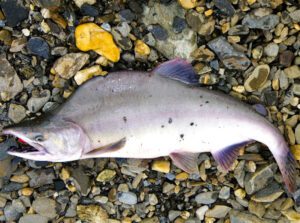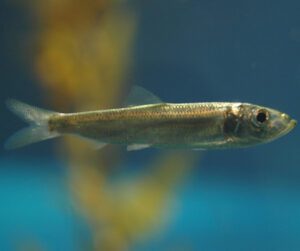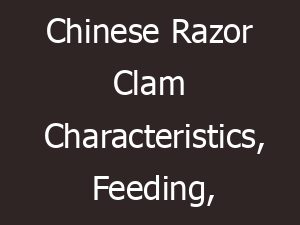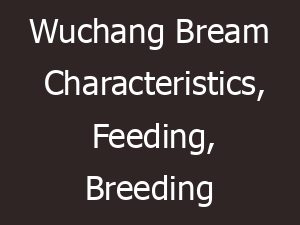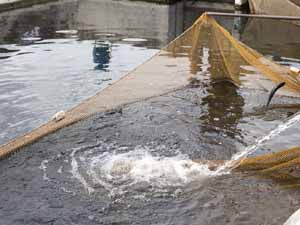Koi fish farming or climbing perch farming is very easy, popular and profitable business. Koi is very popular among the general people of some Asian countries, from the ancient time. Because koi is a very tasty and nutritious fish. Once upon a time koi fish was highly available in the canal, small rivers, swamp, inundation land of Bangladesh, India, Thailand and some other South Asian countries.
Koi fish is considered as the most popular and tasty fish among the all fish species available in these countries. This fish is also very precious nowadays. Koi fish is also known by some other names such as as climbing perch, koi mach, anabas testudineus etc. It is a common fish species of many countries. Koi fish is generally a freshwater fish. This fish can be found in small rivers, canal and swamp.
Nowadays, commercial koi fish farming in pond is becoming very popular. Read more about benefits and commercial farming method of koi fish farming and caring process.
Koi Fish Farming Advantages
Koi fish farming is very easy and profitable. Here we describing the main benefits/advantages of cultivating Thai koi fish commercially.
- Demand of koi fish is very high, as a result it’s market value is comparatively higher always.
- These fishes are able to survive in adverse environment conditions, and mortality rate is very low.
- Can be cultivated in greater density.
- Can be cultivated in small pond or cage.
- Become suitable for sale comparatively in short time, within 3-4 months.
- Growing climbing perch is very profitable and these fish can be cultivated multiple times per year.
- Diseases are less in koi fish than other fish species.
- You will require relatively less capital for starting this business.
- Feeding costs are relatively less, and you can produce the feed of your own.
- Koi fish is mainly insectivorous. For this reason koi fish can be cultivated by providing insects, small fish, toad minnow, snail, oyster flesh etc.
- You can utilize your family labor, if you start small scale production.
- Commercial production is very profitable, and it can be a great income and employment source. Especially for the unemployed educated young people.
- If you don’t have enough money for starting commercial production, then you can apply for bank loans.
- Consuming climbing perch has many health benefits, and you can enjoy fresh fish if you start your own production business.
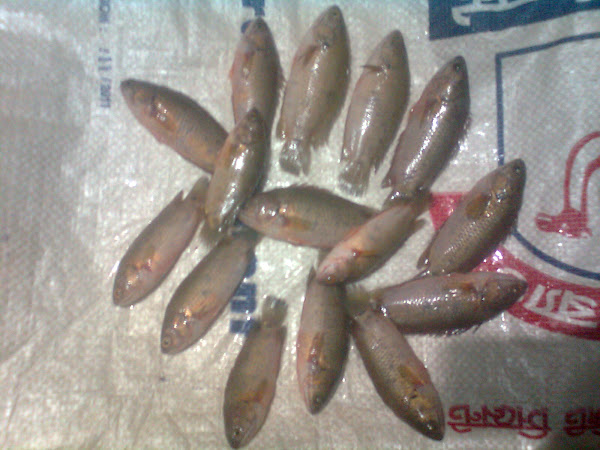
How To Start Climbing Perch/Koi Fish Farming Business?
Starting koi fish farming or climbing perch production is relatively easy and simple. It’s like growing other fish species, and beginners can also start this business. There are very little or almost no difference between Thai koi and common koi. But there are some black spots in the backside of the body of Thai koi and their body is flat than the common koi. Koi fish generally grow very fast and can be cultivated in both small pond and cages. However, cultivating in pond is more profitable. Here we are trying to describe more about starting and operating this business.
Step 1. Pond Selection and Management
It will be better if the selected pond is in open area where adequate sunshine is available. Clean the bush around the pond shore. Cut the branches if there are any big trees in the shore, and ensure at least 8 hours sunlight every day. Especially smaller sized pond is very suitable for Thai koi fish farming business. The perfect size of the pond is 20-30 cent (8500 to 13000 square feet). The main advantage of small pond is easy of maintain. Because, the smaller sized ponds are easily maintained. Ideal depth of the pond is 5-6 feet.
For preparing the pond, remove water from it and let it dry. Remove the excessive clay from the pond, because excessive clay creates harmful gases. You can use some sand for minimizing the amount of clay. Sand keeps the water clean and environment of the pond fresh.
Step 2. Using Lime and Fertilizer
After making the pond dry, you have to prepare it for koi fish farming by using both chemical and organic fertilizers. Using lime is very important. Use lime at the rate of 100 kg per acre. Use 500 kg dung per acre after applying lime. Fill the pond with water, after using organic fertilizers. And then spray 20 kg urea and 20 kg TSP (triple super phosphate) per acre by mixing with water. You can also apply directly instead of spraying with water.
You can stock the minnow of Thai koi after 5-7 days of applying organic and chemical fertilizers. If it’s not possible for you to make the pond dry, then ensure there are no harmful animals or cannibalistic fish species available in the pond. Then apply 100 kg lime per acre. And after 3-5 days of that use, apply 500 kg dung, 20 kg urea and 20 kg TSP per acre. And you can stock minnow 5-7 days after applying the fertilizer. Water of the pond will become slightly green, after 5-7 days of applying fertilizers.
Step 3. Feed Management
Thai koi is a very fast growing fish species. They will grow faster and reach marketing size faster than any other commercial fish species. That’s why providing adequate nutritious food is very important. Here we are tying to describe more about feed management.
Rough Feed Management
For desired growth of koi fish, you must have provide them enough nutritious food. Rough feed is the primary feed management system, and it is mainly for the poor fish farmers who don’t have much money for feeding commercial feeds. In this system, you can use snail or oyster flesh, toad minnow, tripe or fishmeal (not regularly), rice bran, mustardcake etc. Using at least one from the above mentioned feed ingredients and using others occasionally can bring good result. High quality rough feed can be made for Thai koi fish by mixing 25% fishmeal, 30% rice bran, 25% mustard or coconut cake, 20% roughage together.
Commercial Feed
For regular and commercial koi fish farming, you have to provide them sufficient amount of high quality pelleted feed to get maximum production. For growing koi fish, the pellet feed should contain 30-35% protein. If such commercial koi fish feed is not available in your area, then you can use lobster and shrimp feed. You can produce the feed of your own. This will help you to save some money, and at the same time you will be able to maintain good quality. You can use easily available ingredients for making such food. Follow the formula mentioned below:
| Ingredients | Percentage | Protein |
| Fishmeal | 25% | 13.75% |
| Bone And Meat Meal | 8% | 3.5% |
| Blood Meal | 7% | 4.9% |
| Mustered Cake | 20% | 6.6% |
| Rice Bran | 17% | 2.1% |
| Wheat Chaff | 10% | 1.7% |
| Flour | 5% | .9% |
| Dried Molasses | 5% | .8% |
| Oyster Powder | 1% | – |
| Premix | 1% | – |
| Salt | 1% | – |
Feed Applying Rate
You have to apply adequate amount of feed for commercial Thai koi fish farming. Koi fish require high amount of food for their first few days (according to their body weight). And it will reduce when they will grow older. Use approximately 10% feed at first month according to the body weight of fish, 6% in second month, 4% in third month, and 3% at fourth month. Provide the total amount of food twice a day. Food providing rate for 4 months, of 1000 koi fish is listed in the following table.
| Age (Days) | Feed (Grams) |
| 0-15 | 400 |
| 16-30 | 600 |
| 31-45 | 850 |
| 46-60 | 1000 |
| 61-75 | 1200 |
| 76-90 | 1300 |
| 91-105 | 1350 |
| 106-120 | 1400 |
Step 4. Breeding Management
Like many other fish species, the koi fishes are also naturally very good breeders. But most of the farmers don’t want to produce fingerlings at their farm. Rather the commercial producers used to purchase fingerlings from the hatcheries.
Step 5. Caring and Other Management
Taking good care of the fish is very important. Because, good caring not only helps the fish to grow better, but also helps them to stay free from health problems. Check the water quality regularly. Change the water if there are excessive moss, gas in the water. Also change water if it become foul-smelling due to the use of excessive feeds and fertilizer (especially rough feed).
If water changing facility is not available in your area, then use medicine or lime according to the recommendation of an expert. Always try to keep good contact with an expert in your area. And ask him/her immediately, if you notice any health problem.
Step 6. Harvesting
If you practice all the good methods and ways mentioned above, then your fish will become suitable for harvesting within 3-4 months. For Thai koi fish, the right harvesting size starts when they reach between 40 and 80 grams live body weight. You can use the common fish harvesting methods for harvesting koi fish, such as netting. Have the baskets and trucks ready, so that you can send the fish to the market immediately after harvesting
Yield
It’s not possible to tell the exact yield per acre. It depends on numerous factors. But in proper care and management, you can expect up to 1 ton production per acre.
Step 7. Marketing
Marketing koi fish is very easy and simple. It is a very common and popular fish. Especially in the south Asian countries. Both demand and value of this fish are very high in the market. Hope you will probably be able to easily sell your products in the local market. Although, you can target the nearest towns for selling your fish.
These are the common steps and ways for starting and operating a koi fish farming business. Hope this guide has helped you. Good luck and may God bless you!


